My Journey with the OCM Map!
The Backstory
An OCM share certificate
The Oriental Carpet Manufacturers (OCM) was established in Turkey around the end of 1907 and quickly developed into one of the most important manufacturers and traders of oriental rugs in the world. Based in London, they merged with Eastern Kayam in 1986.
I joined in 1987 and owe my initial rug development to the 7 years I spent there, absorbing a little of the knowledge from the many experts who worked for the company.
The Map
The OCM Map
The map makers, several of whom I had the privilege to work with and one in particular, Henri Cros, who became a mentor of mine
This map was developed in 1975 and was given to our customers around the world. A copy was proudly hung in my office and quickly became my primary reference for finding all the tiny villages where our beautiful rugs were made.
I left the company in 1994 and instantly regretted not taking one of these great maps.
A few detailed pics…
Fulfilled at last!
After 28 years of fruitless searching, I spotted one behind a pile of paperwork at a friend’s rug shop.
I casually asked whether she knew anyone who might have a spare one for sale - I was amazed to hear that this was, in fact, a spare one and that the other was proudly hanging in her office. After a brief period of somewhat clumsy negotiating, I left with my best find of 2022!
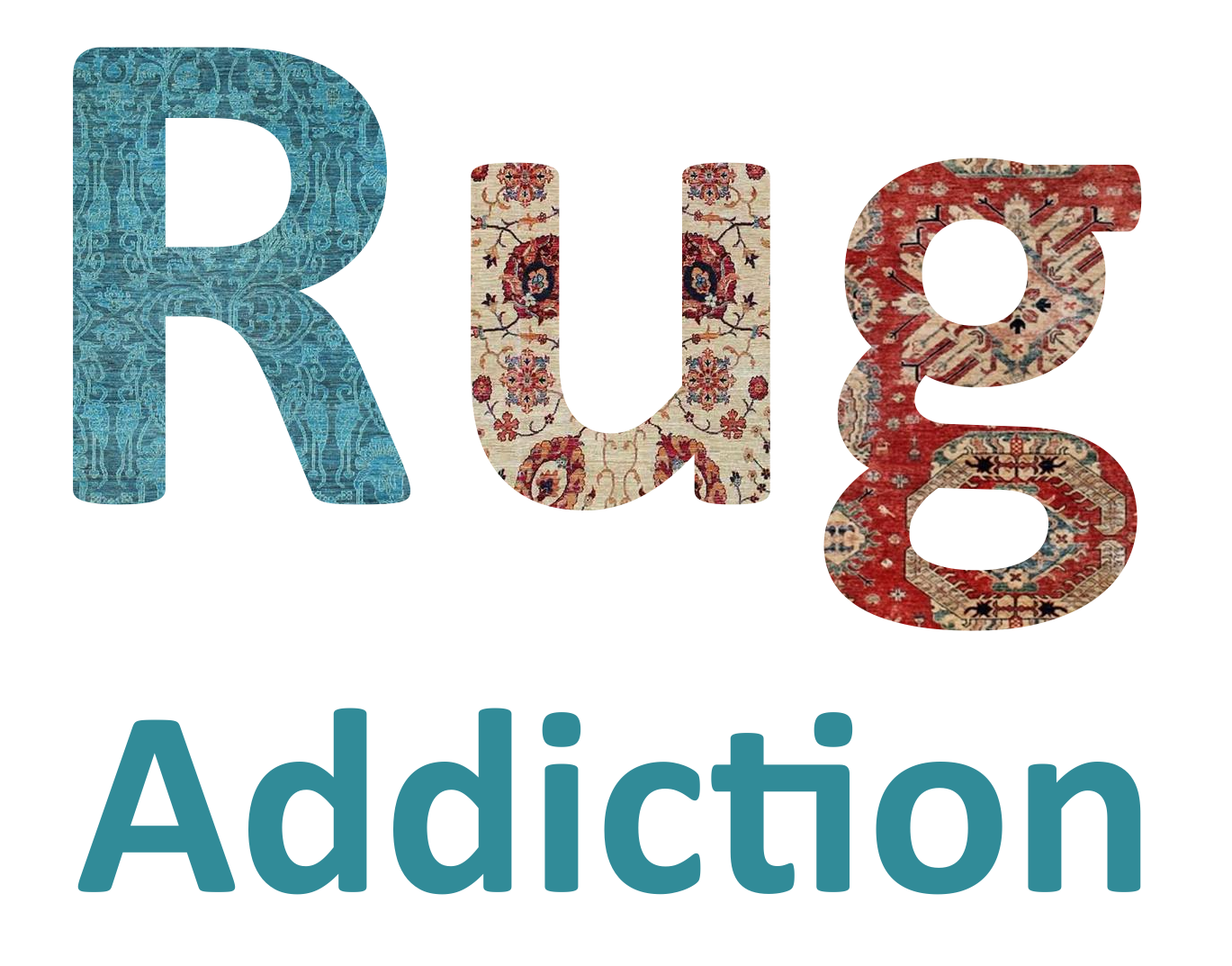
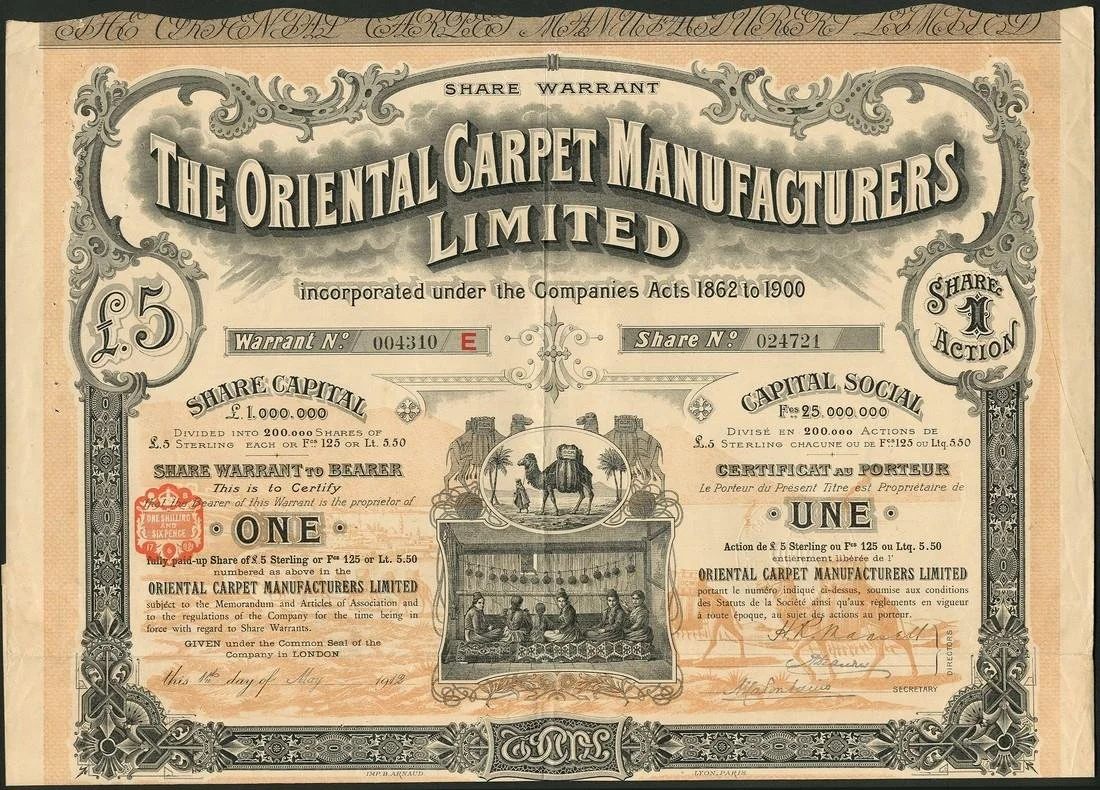
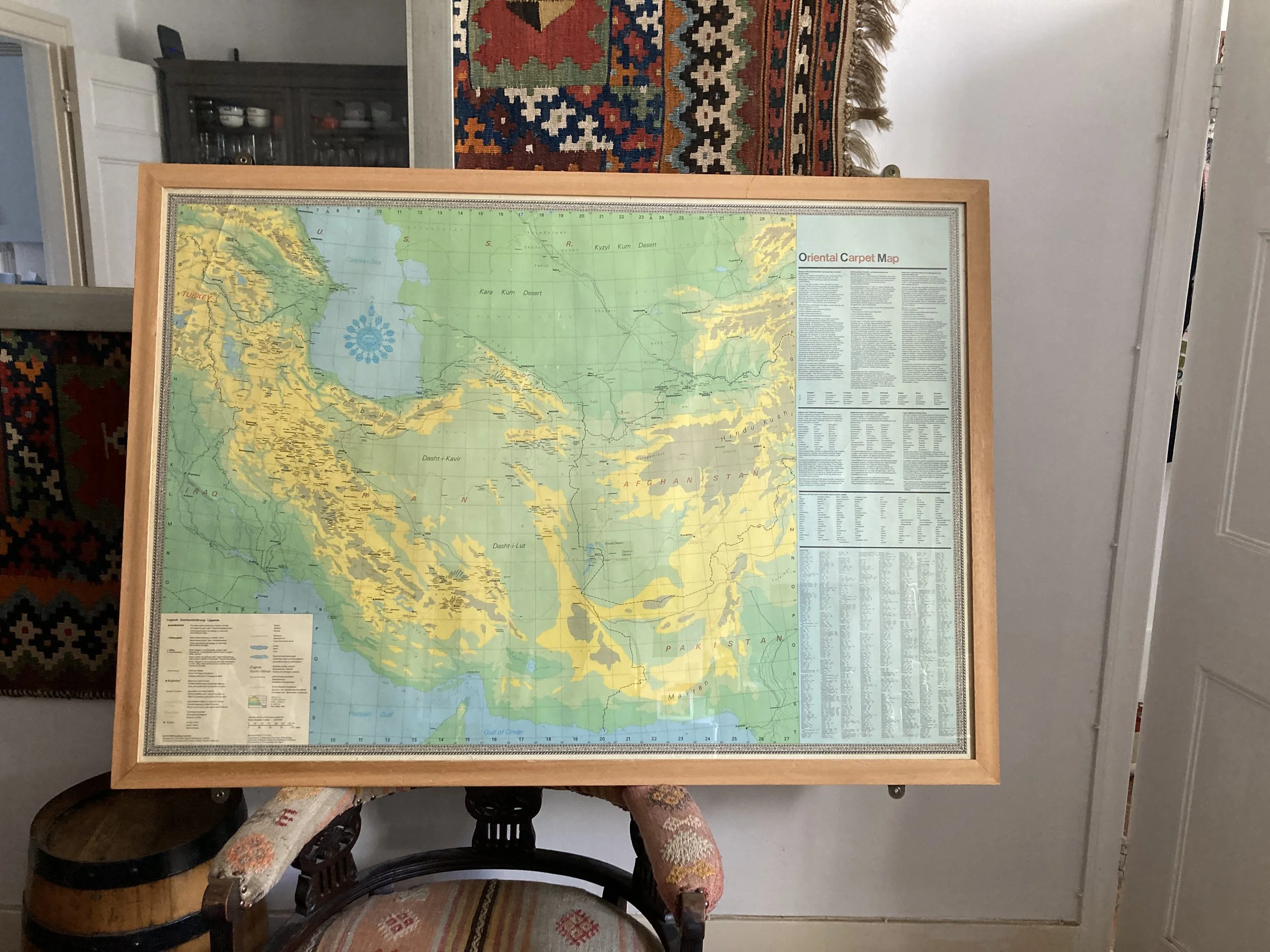
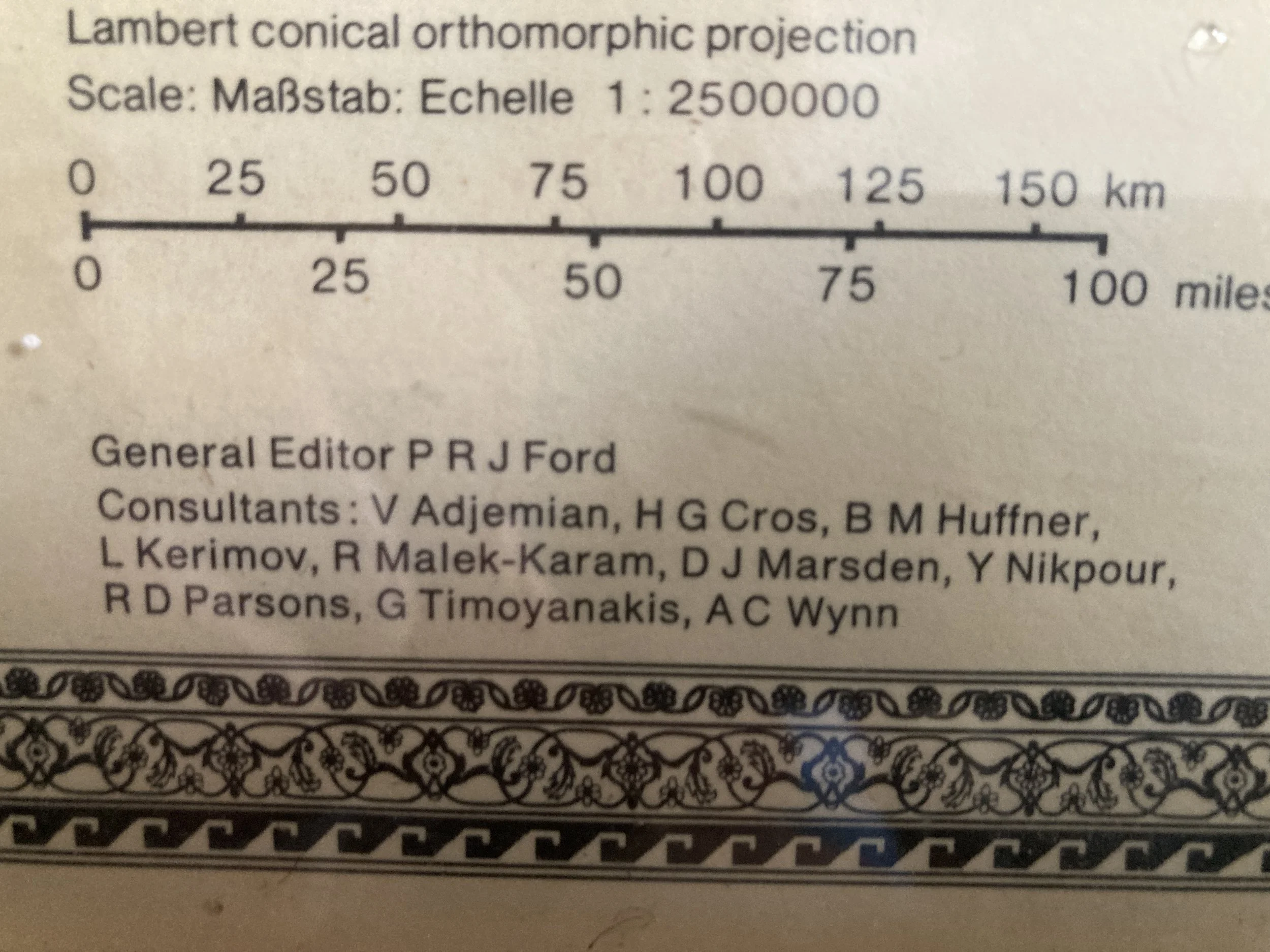

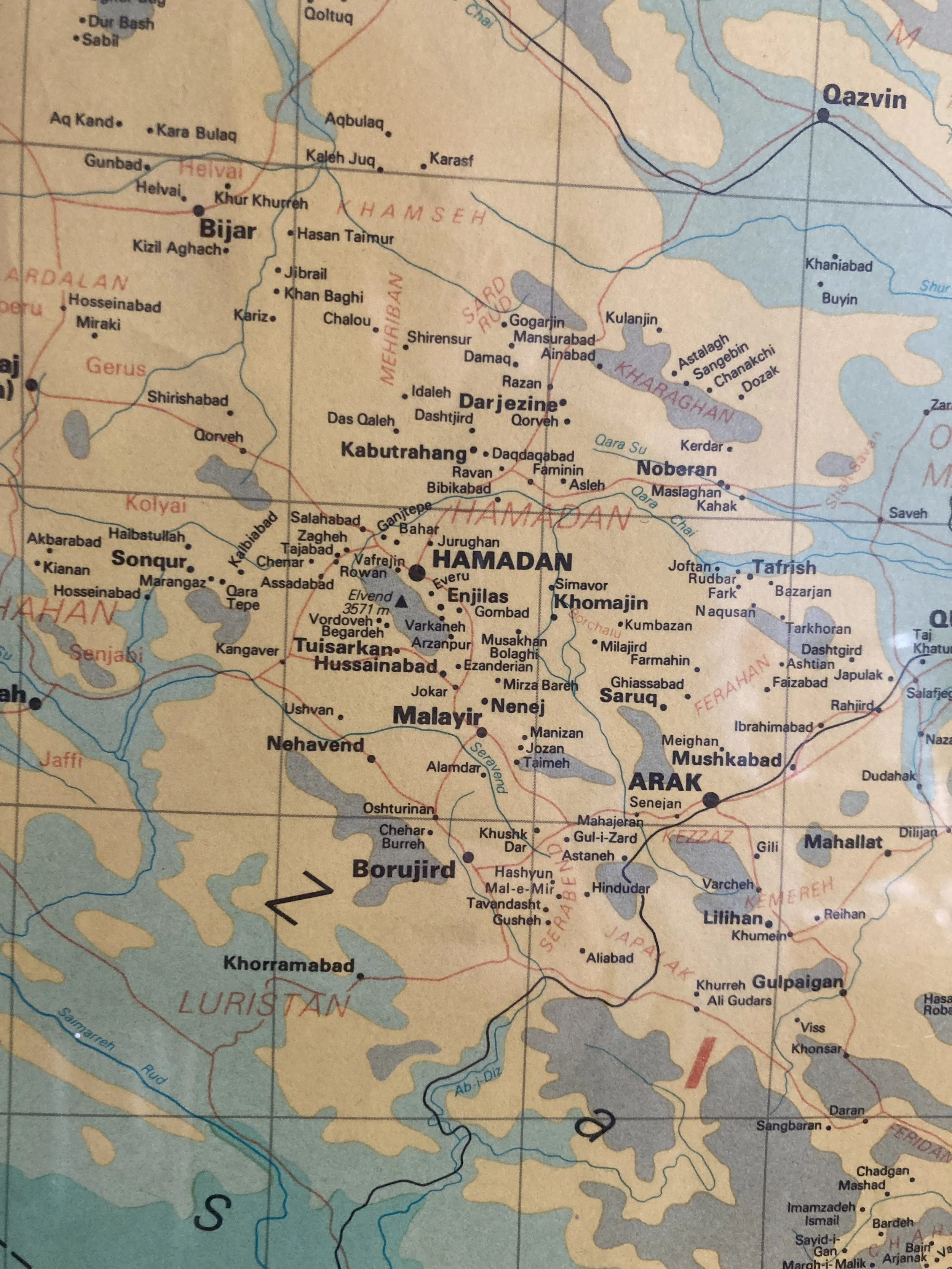
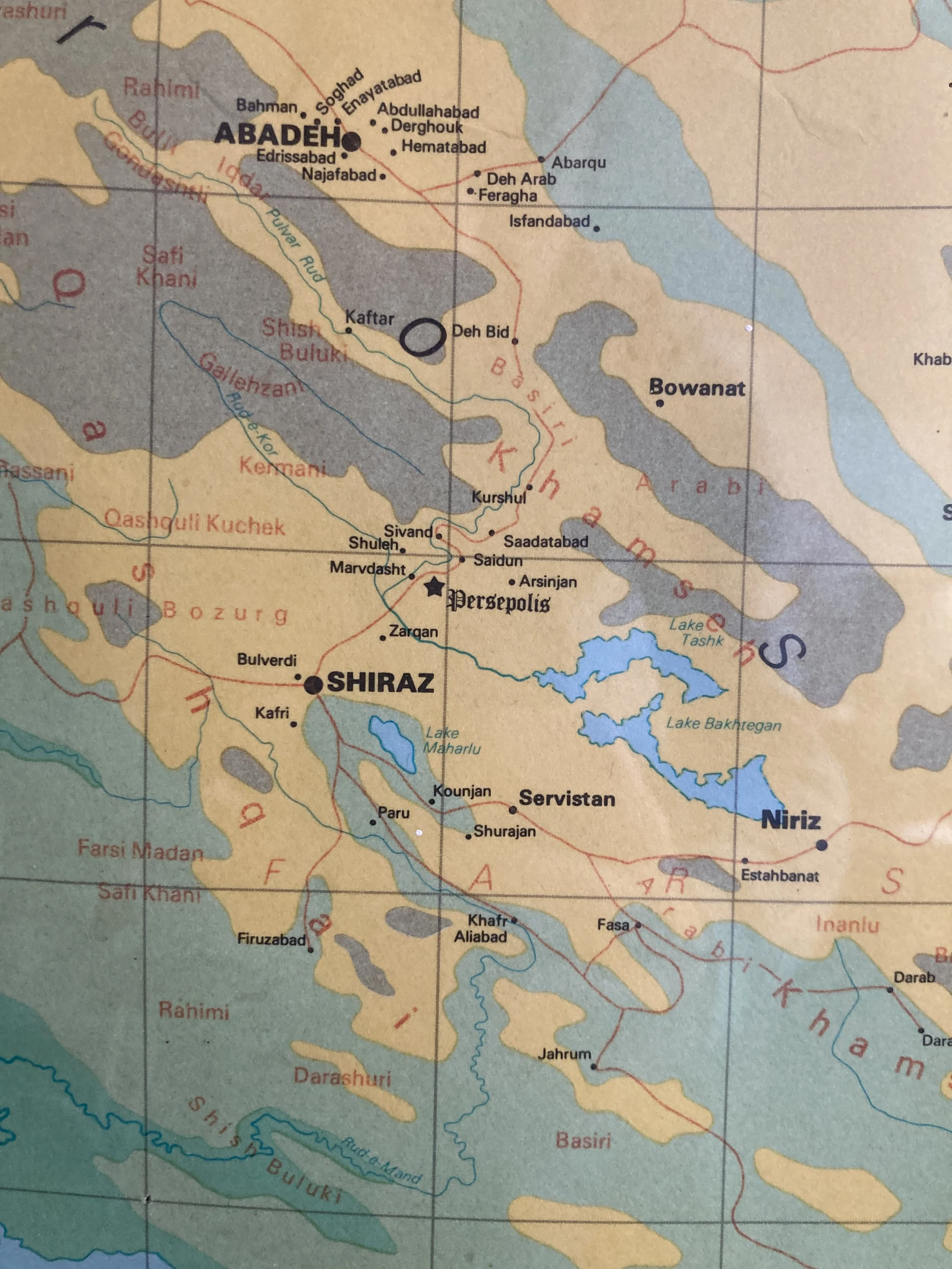

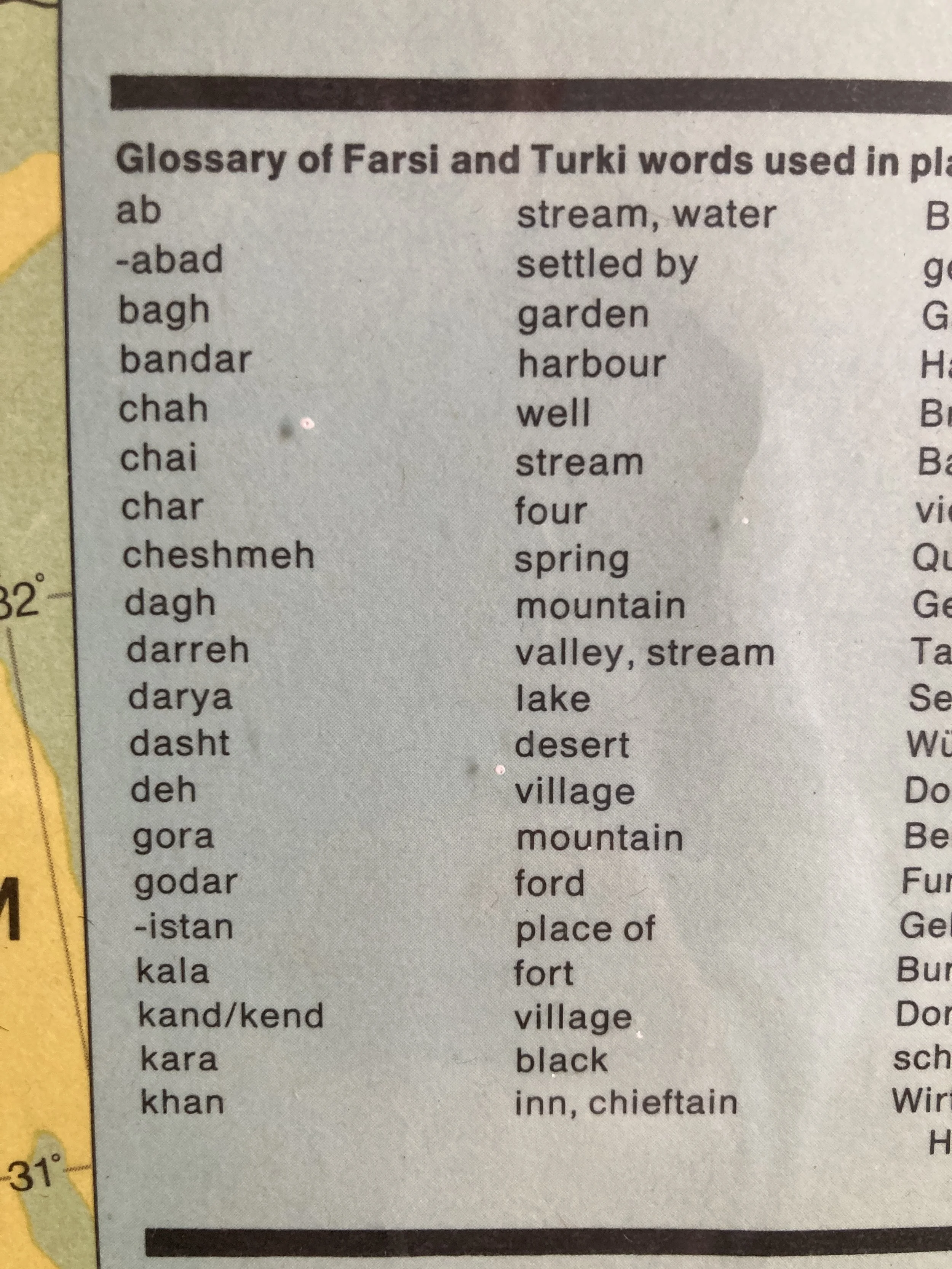
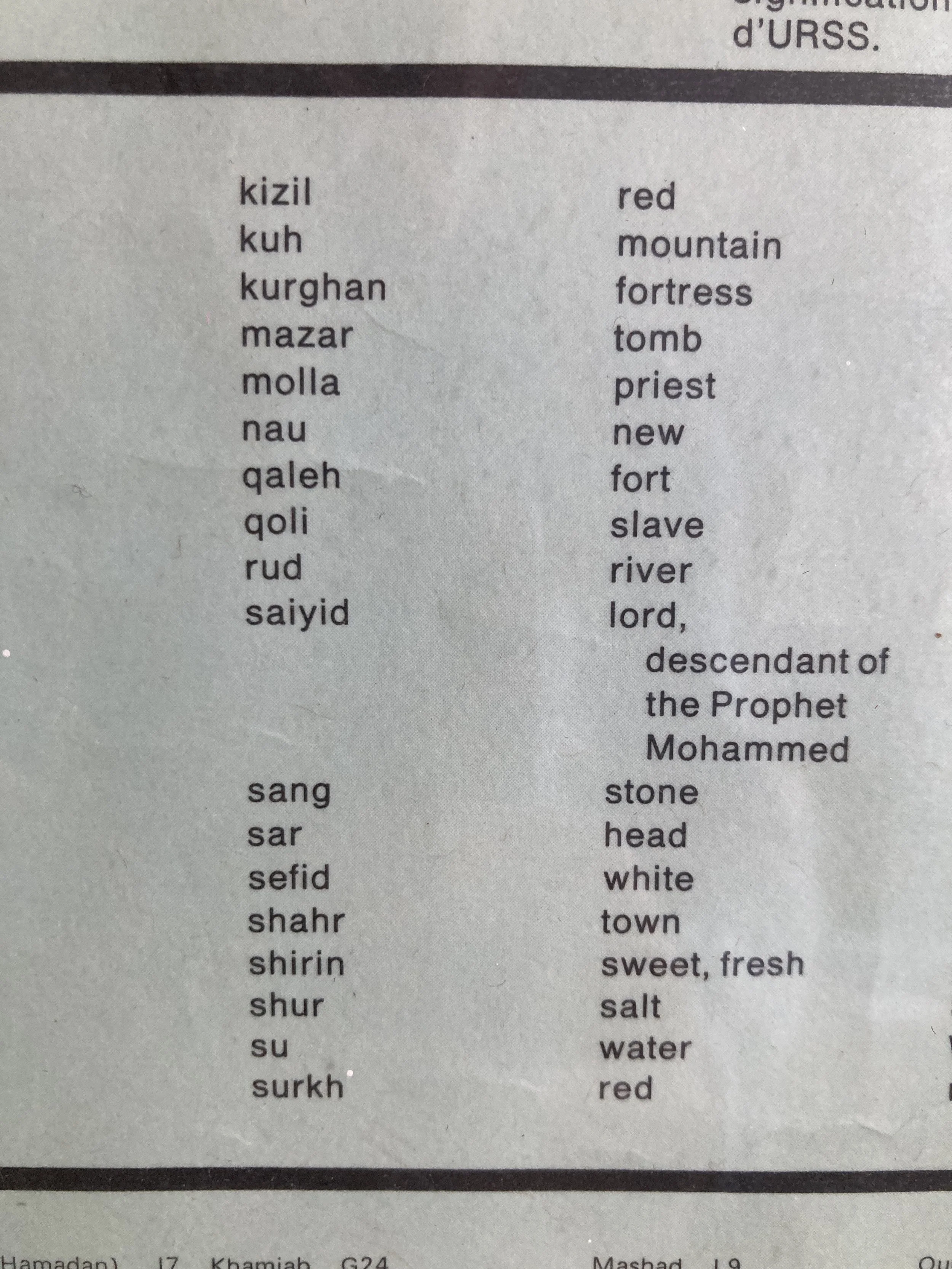
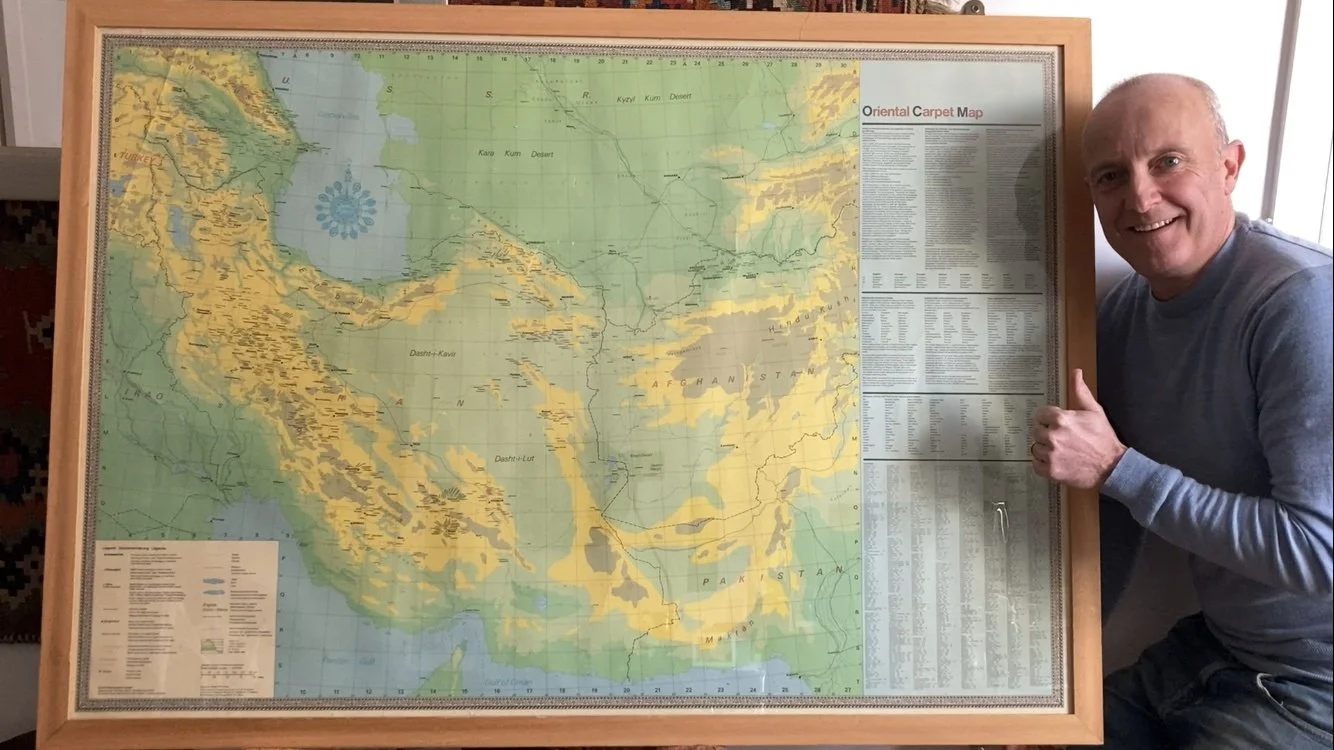
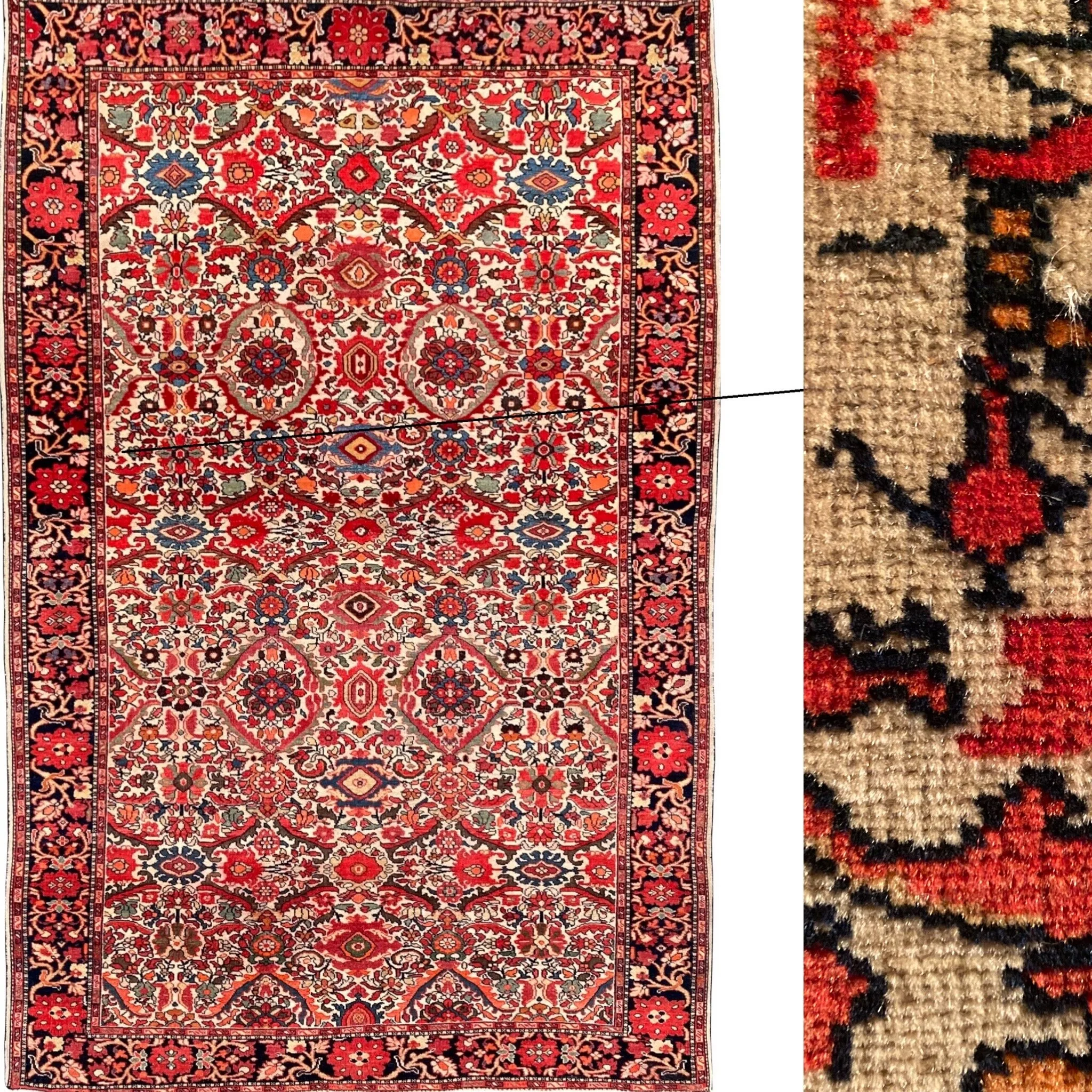



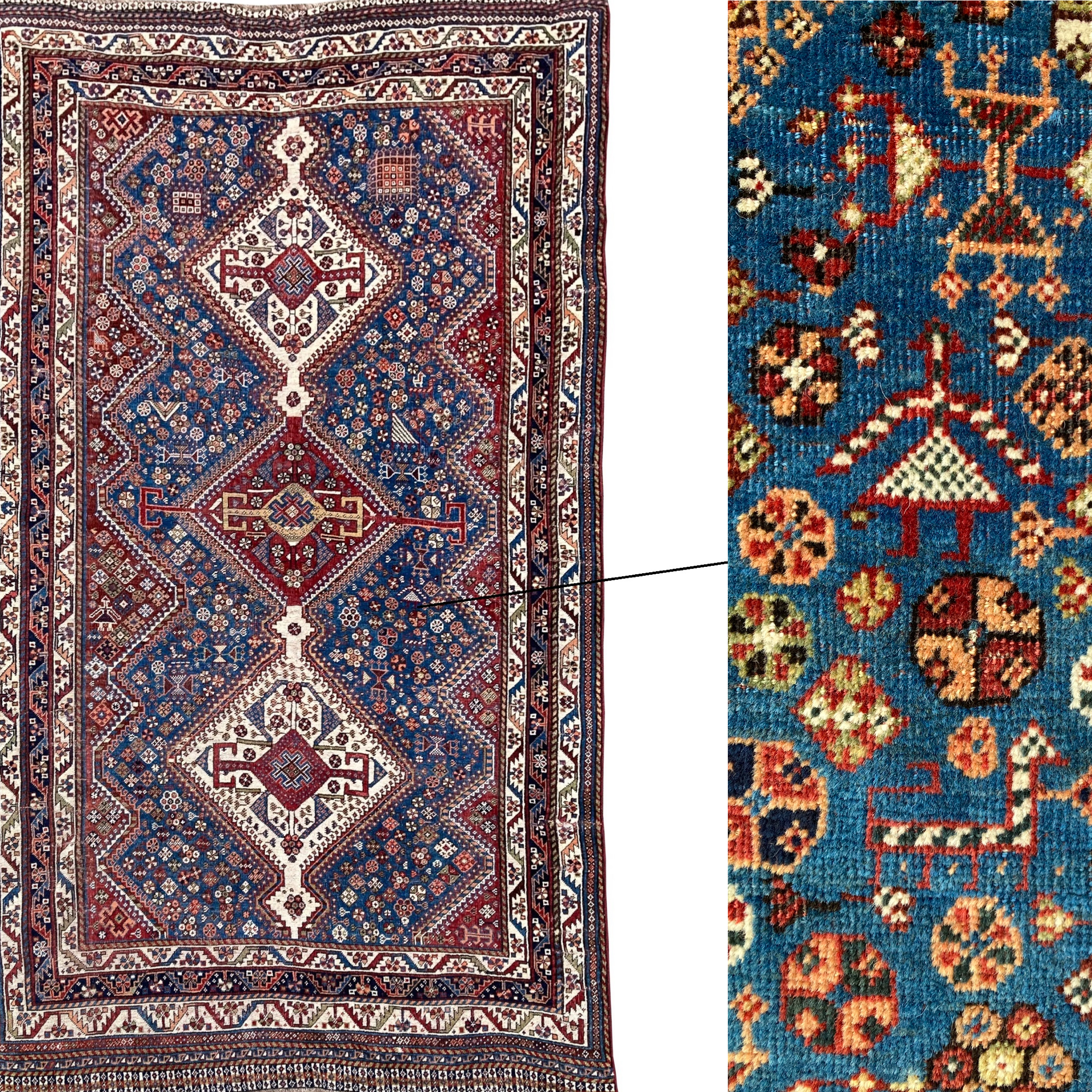


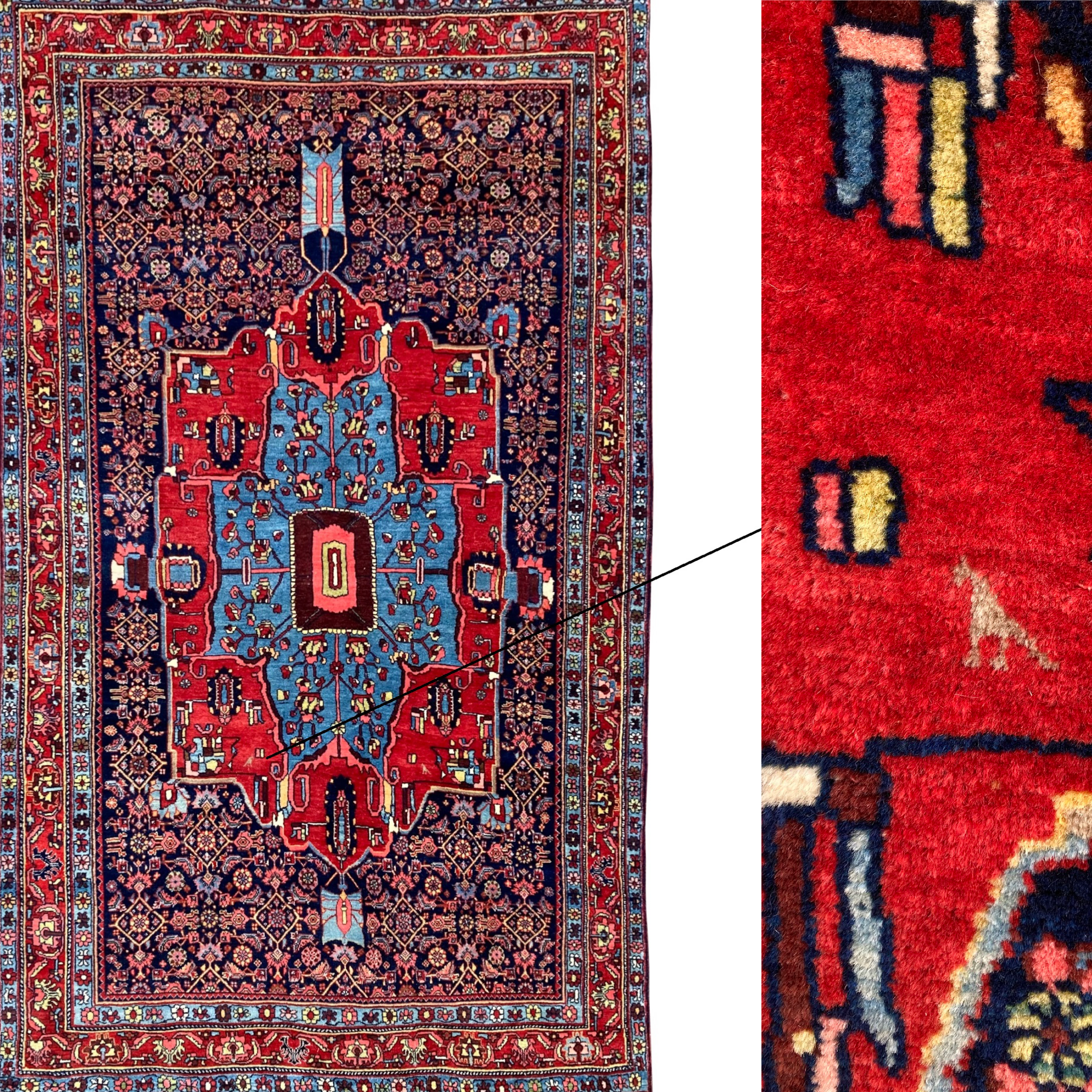




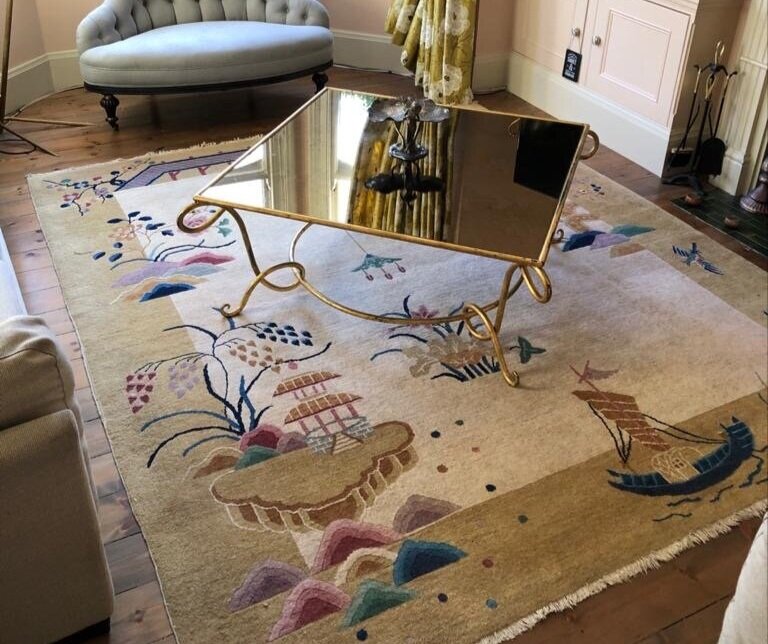
A stunning Art Deco carpet, handwoven in China circa 1920 with an unusual design depicting the eight symbols of Buddhism on a raspberry red field and blue border. For more information on the symbols, please visit https://en.wikipedia.org/wiki/Ashtamangala
Size: 3.02m x 2.16m (9ft 11in x 7ft 1in)
This rug is in good condition with light, age related wear. It has been professionally cleaned but there are a few barely visible surface marks (see photos). Fringes and selvedges are original and secure.
Free worldwide shipping.
All our rugs are covered by our comprehensive returns policy